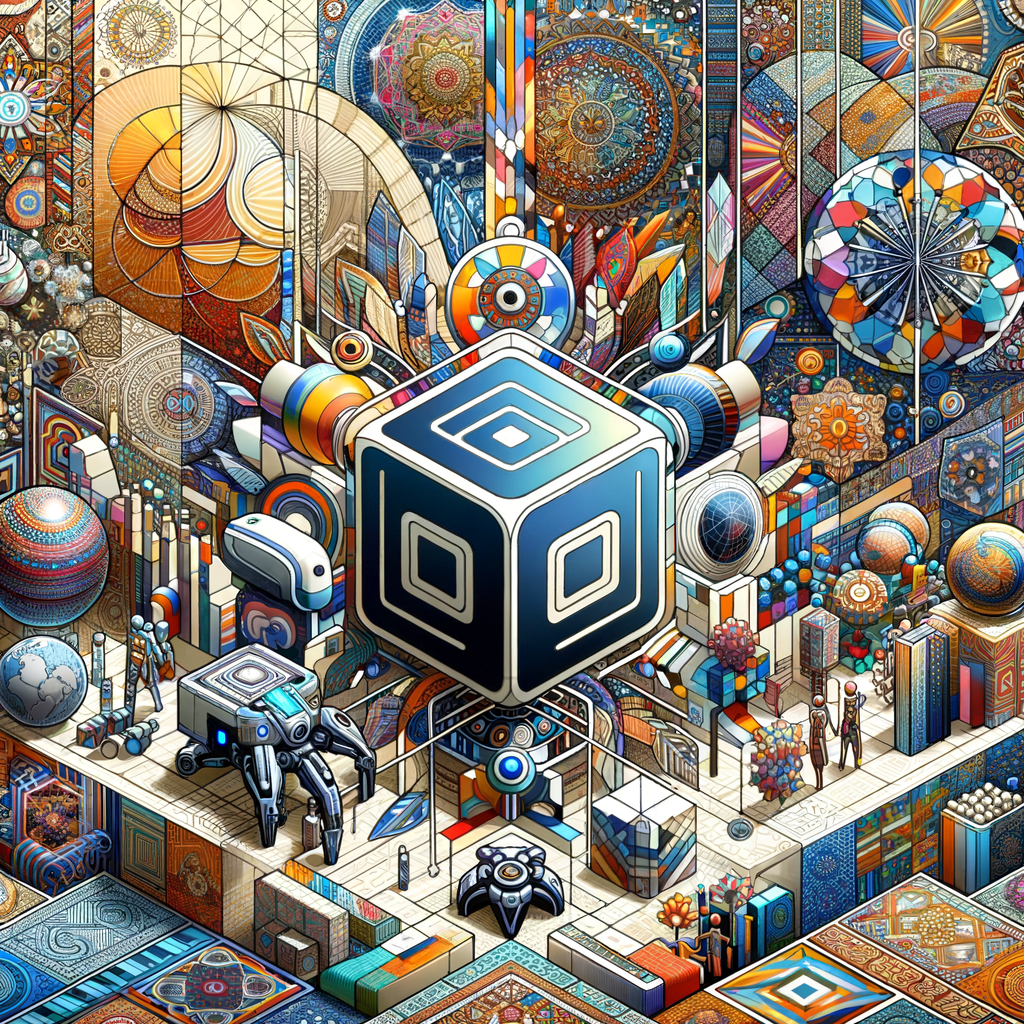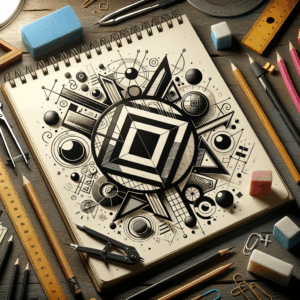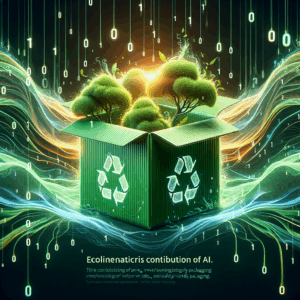
AI Unveils Stunning Cultural Design Trends For 2023
- Understanding AI's Role in Design
- The Rise of Biomimicry
- Key Examples of Biomimicry in 2023
- Color Trends Inspired by AI
- Color Combinations to Watch
- Technology Meets Craftsmanship
- How Technology Enhances Craftsmanship
- Sustainable Materials and Practices
- Benefits of Sustainable Practices
- The Role of Virtual Reality in Design
- Benefits of VR in Design
- The Surging Popularity of Minimalism
- Elements of Minimalist Design
- The Influence of Global Cultures
- Cultural Design Inspirations
- Interactivity in Design
- Benefits of Interactive Design
- Conclusion: The Future of Design Is Bright
- FAQs
- 1. How is AI changing the design industry?
- 2. What is biomimicry in design?
- 3. How can I incorporate the 2023 color trends in my home?
- 4. What are some sustainable materials for designers in 2023?
- 5. What role does Virtual Reality play in design?
- 6. Why is minimalism popular in design right now?
- 7. How can I learn more about different cultural design influences?
- 8. What are the benefits of interactive design?
- 9. Is sustainability a passing trend in design?
- 10. What skills do designers need to thrive in this AI-driven landscape?
- References
AI Unveils Stunning Cultural Design Trends for 2023
Artificial Intelligence (AI) is reshaping many fields, including design and cultural trends. The power of AI transcends mere functionality; it dramatically influences aesthetics, sustainability, and user engagement. In 2023, innovative cultural design trends shape the way we interact with our environments, thus making our lives richer and more vibrant.
Understanding AI’s Role in Design
Over recent years, AI has evolved from a niche technology to a cornerstone in design. Designers now harness its capabilities to analyze data, generate creative solutions, and enhance user experiences. AI algorithms can predict trends by processing vast amounts of information about consumer behavior, preferences, and cultural shifts.
Moreover, AI can automate tedious tasks allowing designers to focus on creative aspects. This results in a more efficient workflow and the opportunity for the creation of unique designs that resonate with today’s audiences. As AI continues to undergo transformative developments, its partnership with human creativity can lead to unexpected and inspiring outcomes.
The Rise of Biomimicry
One noticeable trend this year is the rise of biomimicry. Designers draw inspiration from nature to solve human problems. This trend emphasizes sustainability and harmony with the environment. Using AI technologies, designers analyze natural patterns and phenomena to integrate them into various disciplines like architecture, product design, and fashion.
Biomimicry goes beyond aesthetics. It also fosters sustainability by advocating for eco-friendly materials and practices. For instance, structures mimicking termite mounds regulate temperature without HVAC systems. Such innovations promise significant energy savings and benefit the planet, aligning with global sustainability goals.
Key Examples of Biomimicry in 2023
– Architecture: Green roofs and walls designed based on plant growth patterns.
– Fashion: Clothing made from biodegradable materials simulated after natural fibers.
– Product Design: Furniture deriving structural integrity from the design of seashells.
By embracing biomimicry, designers create profound connections between art, science, and the environment.
Color Trends Inspired by AI
AI advances predict cultural shifts, thereby guiding color trends in design for 2023. The palettes are vibrant yet balanced, featuring combinations that evoke emotions, create a sense of tranquility, or stimulate creativity. Algorithms can suggest colors based on historical data, current styles, and even emotional impact.
For 2023, we see the emergence of colors like vibrant teal, soft clay, and energizing mustard yellow. These hues resonate with people, encouraging a renewed connection with their surroundings. Designers experiment with gradients and unusual combinations to push the boundaries of traditional color schemes.
Color Combinations to Watch
– Teal and Coral: Create a tropical, refreshing vibe.
– Mustard and Slate Gray: Add warmth and sophistication.
– Soft Clay and Dusty Rose: Channel calmness and femininity.
Using these color trends, designers can evoke feelings that resonate deeply with consumers.
Technology Meets Craftsmanship
The marriage of technology and craftsmanship is another appealing trend in 2023. Behind every stunning piece, you will often find skilled artisans using AI tools to enhance their traditional methods. This symbiosis creates a synergy between age-old techniques and cutting-edge technology.
For instance, artisans can employ AI-driven design software to refine their work. These tools suggest improvements and optimize their creations in real-time. Consequently, the finished products exude quality and innovation, bridging the gap between past legacies and future possibilities.
How Technology Enhances Craftsmanship
1. Precision: AI tools improve accuracy in measurements and proportions.
2. Efficiency: Automation narrows the time frame for production.
3. Personalization: AI helps create custom designs that cater to individual preferences.
This convergence elevates craftsmanship and presents a new paradigm of design innovation.
Sustainable Materials and Practices
The trend towards sustainability is unrelenting. In 2023, designers increasingly explore materials that minimize environmental impact. AI aids this exploration by analyzing material lifecycles and predicting their ecological effects.
We see a rise in the use of bio-based materials like mycelium, recycled plastics, and organic fabrics. These resources not only reduce waste but also innovate traditional designs. For example, furniture designers utilize mycelium to create sustainable, compostable pieces that have minimal impact on our planet.
Benefits of Sustainable Practices
– Environmental Impact: Reduces carbon footprint and waste.
– Consumer Appeal: Modern consumers prioritize sustainability, making these products more desirable.
– Innovative Solutions: Creatively repurposing waste materials can lead to breakthrough designs.
As sustainability becomes the norm, the landscape of design is set for significant transformation.
The Role of Virtual Reality in Design
Virtual Reality (VR) continues to shape cultural design in 2023. By offering immersive experiences, designers can present their concepts in impactful ways. Users can “walk” through virtual spaces, view color palettes, and even interact with products before they exist in the physical world.
This powerful tool fosters collaboration among designers, clients, and consumers alike. Stakeholders can visualize designs in real-time, providing feedback that leads to insight-driven improvements. The result is more refined, user-centric designs that better meet consumer needs.
Benefits of VR in Design
1. Enhanced Visualization: Clients can experience designs firsthand.
2. Streamlined Feedback Loop: Real-time discussions lead to quicker refinements.
3. Greater Accessibility: Consumers worldwide can engage with designs without geographical barriers.
By integrating VR technology, design becomes a more engaging journey for everyone involved.
The Surging Popularity of Minimalism
The minimalist aesthetic continues to thrive in 2023. AI algorithms confirm that consumers increasingly seek simplicity and functionality in their designs. Clutter-free spaces enhance mental clarity, making this approach appealing in daily life.
Designers remember that minimalism doesn’t have to mean boring. They play with texture and subtle details to create visual interest. By utilizing AI insights into consumer preferences, designers craft pieces that reflect minimalist ethos while remaining captivating.
Elements of Minimalist Design
– Neutral Color Palettes: Whites, grays, and muted tones dominate.
– Clean Lines: Emphasizing symmetry and order in layouts.
– Functional Decor: Items that serve a purpose while enhancing aesthetics.
As minimalism pervades various sectors, it becomes a mainstay in cultural design trends.
The Influence of Global Cultures
As globalization expands, designers find inspiration in diverse cultures. 2023 marks a year where cross-cultural elements blend seamlessly within design. AI assists in understanding cultural nuances, allowing designers to create pieces that are respectful and authentic.
For instance, motifs and colors from indigenous people can find their way into mainstream fashion. This encourages a richer dialogue about heritage while also fostering appreciation for various traditions. Designers are mindful of balancing respect and exploration when adopting global influences.
Cultural Design Inspirations
1. Japanese Minimalism: Simplicity and natural beauty shine through.
2. African Textiles: Bold patterns showcase vibrancy and storytelling.
3. Scandinavian Functionality: Practical designs that prioritize sustainability.
These influences diversify design offerings while creating a more inclusive narrative.
Interactivity in Design
As user engagement becomes paramount, interactivity shapes design in remarkable ways. Products that allow users to interact with features generate deeper emotional connections. In 2023, designers are creating experiences that not only look beautiful but also invite involvement.
For example, home decor items equipped with smart technology adjust to user preferences, enhancing comfort and personalization. Similarly, fashion designers are incorporating wearable technology that responds to environmental conditions. This trend emphasizes that design is not just seen but also experienced.
Benefits of Interactive Design
– Enhanced User Experience: Products become intuitive and responsive.
– Increased Engagement: Users form lasting connections with interactive elements.
– Personalization: Designs catering to individual preferences drive consumer satisfaction.
In a world striving for connection, interactivity offers a fulfilling solution.
Conclusion: The Future of Design Is Bright
In 2023, we witness an exhilarating fusion of AI, sustainability, and interactivity in design. As technology evolves, the possibilities become limitless. Designers who harness these trends will create culturally rich, engaging, and sustainable experiences for their audiences.
By understanding consumer preferences, embracing diverse cultures, and prioritizing eco-friendly practices, the design landscape will continue to transform. If we embrace innovation and creativity with an open mind, we can look forward to a vibrant future brimming with stunning designs.
FAQs
1. How is AI changing the design industry?
AI aids in predicting trends, automating tasks, and enhancing user experiences, allowing designers to focus more on creativity.
2. What is biomimicry in design?
Biomimicry involves drawing inspiration from nature to solve human challenges and promote sustainability in design.
3. How can I incorporate the 2023 color trends in my home?
Use vibrant colors like teal and clay in decor, textiles, and accent pieces for a fresh look.
4. What are some sustainable materials for designers in 2023?
Consider bio-based materials, recycled plastics, and organic fabrics for eco-friendly designs.
5. What role does Virtual Reality play in design?
VR allows immersive experiences for clients, enabling them to visualize designs in a realistic way before production.
6. Why is minimalism popular in design right now?
Minimalism promotes simplicity and functionality, which appeals to modern consumers seeking clarity in their environments.
7. How can I learn more about different cultural design influences?
Research cultural histories, engage with diverse communities, and follow design blogs focused on global trends.
8. What are the benefits of interactive design?
Interactive designs provide enhanced user experiences, increased engagement, and personalized solutions that cater to individual needs.
9. Is sustainability a passing trend in design?
No, sustainability is becoming a fundamental principle in design, with increasing consumer demand for eco-friendly products.
10. What skills do designers need to thrive in this AI-driven landscape?
Designers should embrace technology, enhance their creativity, and cultivate an understanding of user-centered design principles.
References
– Harvard Business Review on AI in Design
– Environmental Design Research Association
– American Institute of Architects on Sustainable Design
– Dezeen on Biomimicry in Architecture
– Color Trends Forecasting at Pantone

